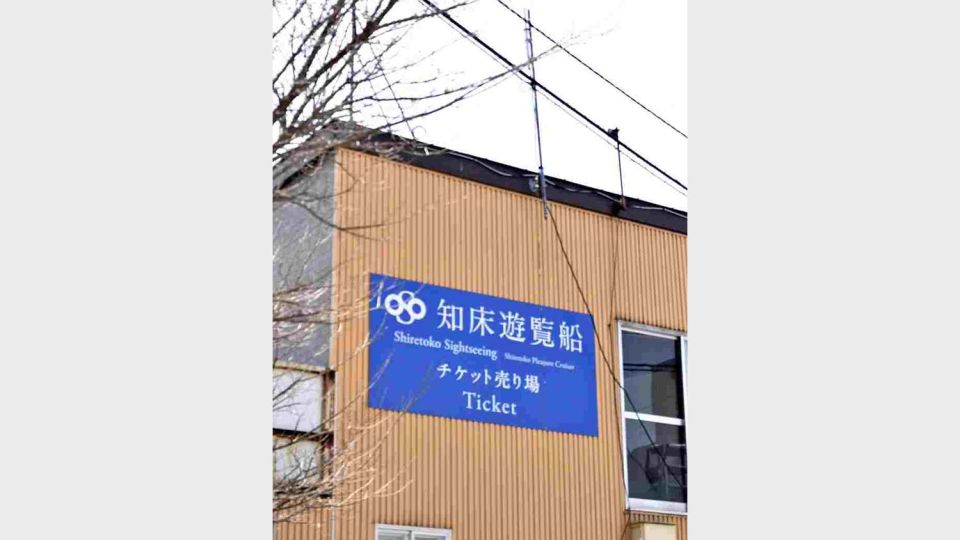April 28, 2022
TOKYO – A radio antenna installed at the operating company of the sightseeing boat that went missing off the Shiretoko Peninsula, Hokkaido, was damaged at the time of the accident, preventing communication with the vessel, according to sources.
The Kazu I went missing on Saturday with 26 people aboard.
The operator, Shiretoko Pleasure Boat, had also received instructions from the Japan Coast Guard to reinstall a piece of GPS equipment on the boat two days prior to the accident, the sources said.
The Land, Infrastructure, Transport and Tourism Ministry and the JCG will conduct a detailed inspection to determine whether there were problems with the company’s safety management.
According to sources related to the transport ministry, after Saturday’s accident, ministry officials confirmed that a radio antenna installed on the roof of Shiretoko Pleasure Boat had been damaged.
The operator is based in Shari, Hokkaido.
The antenna should have been used to communicate with boats off the peninsula. However, it is possible that the antenna did not work due to damage caused by snow.
“The company’s radio antenna had been broken for some time,” a source close to the company told The Yomiuri Shimbun on Tuesday. “When the accident occurred, it was in a state that prevented communication with the sightseeing boat.”
The first call on Saturday to the JCG did not come from Shiretoko Pleasure Boat. Instead, it came from another sightseeing boat company in Shari as the firm’s staff had noticed problems with the Kazu I.
According to the company, its staff radioed a man believed to be the Kazu I’s captain regarding the location of the boat as it had not returned at the scheduled time. The man told the staff, “We’re at Kashuni (Falls). It’ll take some time [to return].”
However, the staff then heard a panicked voice saying, “Oh, my God. Put the life jackets on.”
That transmission prompted the staff to call the JCG.
Passenger ship operators are required under the Marine Transportation Law to stipulate reporting and communication procedures between ships and offices in their safety management regulations in case of an accident. The transport ministry and others are checking if the regulations were followed.
JCG’s instruction before accident
It has also been learned that the JCG had instructed Shiretoko Pleasure Boat during a regular safety inspection on April 21, two days prior to the accident, to reinstall a piece of equipment called a GPS plotter that checks the location of ships at sea, when the JCG noticed the equipment had been removed from the Kazu I.
According to JCG sources, a GPS plotter displays the location of a ship, nautical charts and bathymetric images to determine the water depth.
Although installation of the equipment is not mandatory, many vessels are equipped with the device.
Because the Kazu I ran aground in June last year, the JCG instructed the company to use a GPS plotter to prevent a recurrence of the accident.
During the April 21 inspection, Shiretoko Pleasure Boat told the JCG that the equipment had been temporarily removed for maintenance. The JCG instructed the company to reinstall it on the Kazu I and that it would check later for an update.
It is unknown if the GPS plotter was installed on the Kazu I at the time of the accident.

